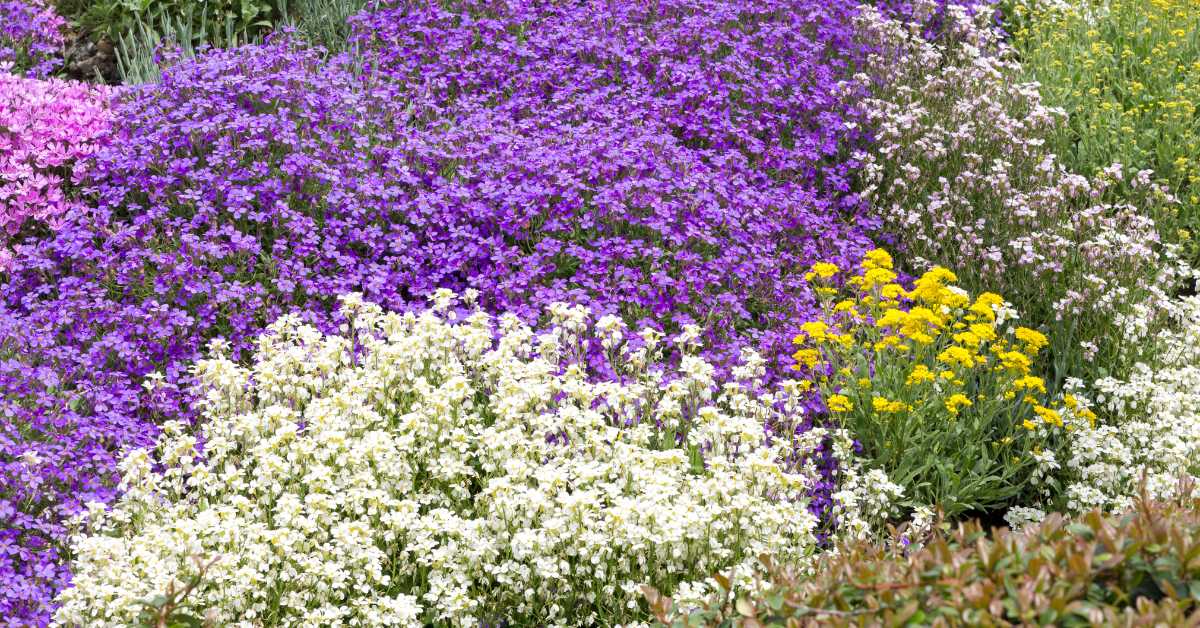Are you dealing with stubborn spots in your garden where grass just won’t grow? Perhaps you have a sloping area that’s tough to mow, or you want to fill in space around taller plants with something a little more lush. Ground covers can be the perfect solution, providing beautiful greenery and blooms without the hassle of constant maintenance. In this blog, we’ll explore 12 of the best low-maintenance ground cover plants that will transform tricky spots into thriving areas of natural beauty.
What Are Ground Cover Plants, and Why Use Them?
Ground covers are low-growing perennial plants that spread across the soil to create a dense, lush carpet of greenery. Unlike taller plants, these ground-huggers usually grow no more than a few inches high, making them ideal for filling in spaces where grass or other plants struggle.
Why Choose Ground Covers?
Ground covers are not only practical, but they can also add visual interest and texture to your garden. Here’s why you should consider adding them:
- Fill Shaded Areas: Ground covers thrive under trees or in other shaded spots where grass might struggle.
- Prevent Soil Erosion: They’re great for stabilizing soil on slopes and hillsides, reducing the risk of erosion.
- Drought Tolerance: Some varieties are well-suited for hot, dry areas that receive little water (think succulents!).
- Create Living Mulch: They help retain soil moisture, suppress weeds, and add a lush look to the garden bed.
- Add Color and Texture: Many ground covers offer beautiful blooms or unique foliage that adds charm to any landscape.
Whether you want to fill in around pavers, create a soft carpet for high-traffic areas, or simply bring some color to a tricky corner, ground covers are a fantastic choice. Here are 12 low-maintenance options that can bring life to your garden.
1. Bearberry (Arctostaphylos uva-ursi)

Bearberry is a tough and versatile evergreen ground cover that thrives in poor soil conditions, making it ideal for those difficult spots in the garden.
- Height: 6 inches
- Zones: 2-6
- Light Requirements: Sun to partial shade
- Key Features: Glossy, dark-green leaves that turn bronze-red in fall, with tiny pinkish-white flowers in spring and bright red berries that attract birds.
Bearberry is particularly great for sandy areas or rocky sites where other plants might struggle. Spacing the plants about 12 inches apart will create a dense, mat-like cover in just a few seasons. Plus, the attractive berries add a pop of color in late summer.
2. Hen-and-Chicks (Sempervivum spp.)
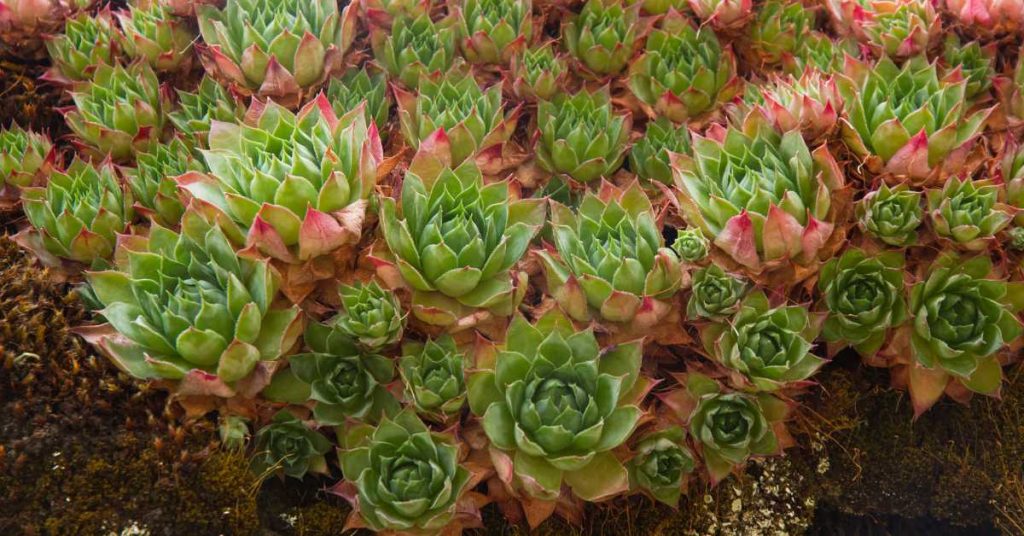
For those hot, sunny areas that seem inhospitable to most plants, Hens-and-chicks are a charming solution. These succulents are as tough as they are beautiful.
- Height: 1-3 inches
- Zones: 3-8
- Light Requirements: Full sun
- Key Features: Rosettes of fleshy, water-storing leaves that multiply quickly and form dense clumps.
These low-growing succulents are perfect for rock gardens, between stepping stones, or anywhere you want a low-water option. While they’re not ideal for walking on, they thrive in areas where little else will grow, adding texture and interest to dry spots.
3. Sedum (Stonecrop)

Sedums, or stonecrops, are some of the hardiest ground cover plants you can find. With their thick, water-storing leaves, they thrive in dry, rocky conditions.
- Height: 2-6 inches
- Zones: 3-10
- Light Requirements: Full sun
- Key Features: Drought-resistant with colorful blooms that attract pollinators, such as bees.
Consider varieties like ‘John Creech’ Sedum, which produces pink flowers, or ‘Fuldaglut’ Sedum, with its reddish foliage and rose-red flowers. Both options are great for filling in hot, dry areas where other plants would wilt, adding vibrant color to your landscape throughout the summer.
4. Creeping Phlox (Phlox stolonifera)
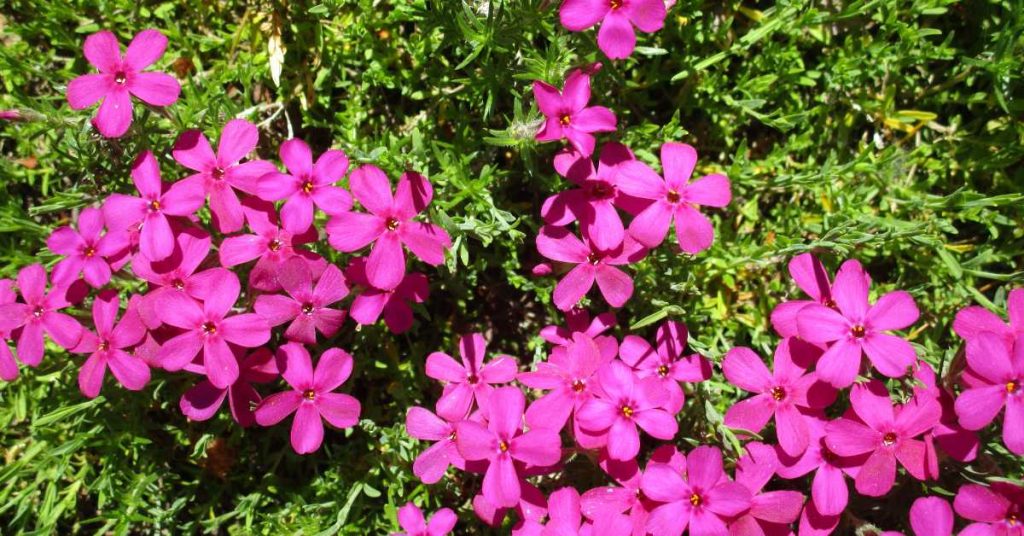
Creeping Phlox is a showstopper in the garden, especially during the spring when it bursts into bloom. This plant creates a dense mat of foliage that is completely covered with flowers, making it a stunning addition to any garden bed.
- Height: 4-6 inches
- Zones: 3-9
- Light Requirements: Full sun to partial shade
- Key Features: Masses of pink, purple, or white flowers that cover the foliage in spring.
Ideal for rocky areas, slopes, or along garden borders, Creeping Phlox offers a carpet of color that’s perfect for brightening up dull spaces. Once the flowers fade, the dense green foliage remains, providing a lush ground cover year-round.
5. Foamflower (Tiarella cordifolia)
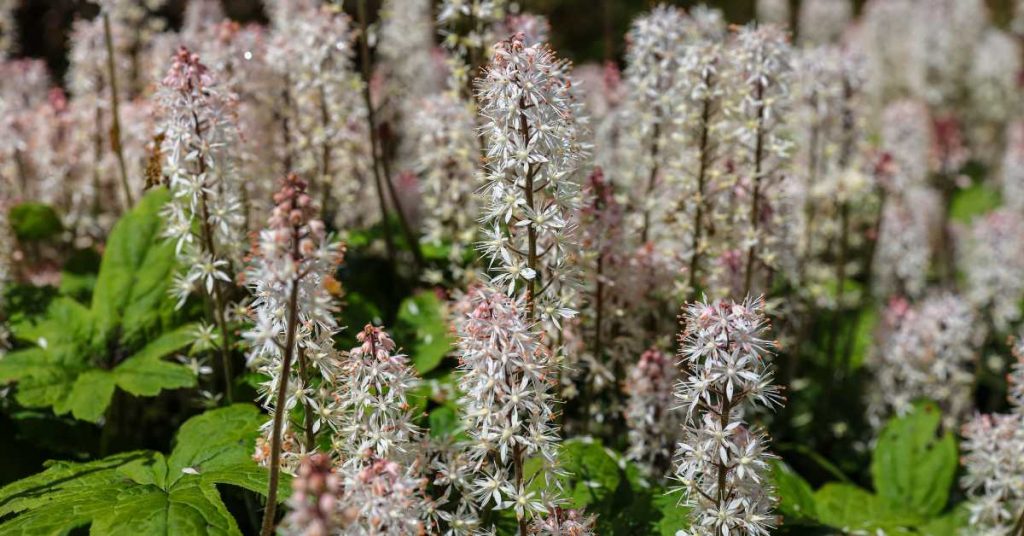
Foamflower is a native ground cover that thrives in shady spots. Its delicate, frothy flowers add a whimsical touch to woodland gardens, and its evergreen foliage provides year-round interest.
- Height: 6-12 inches
- Zones: 3-9
- Light Requirements: Partial to full shade
- Key Features: Soft white flower spikes in spring and heart-shaped leaves with intricate veining.
Foamflower is perfect for planting under trees, along shaded pathways, or as a filler between taller shade-loving plants. It performs well in moist, well-drained soil and helps create a lush woodland feel.
6. Creeping Thyme (Thymus serpyllum)

Creeping Thyme is a delightful, aromatic herb that makes a fantastic ground cover. It’s known for its durability and charming purple flowers that bloom in summer.
- Height: 2-3 inches
- Zones: 4-9
- Light Requirements: Full sun
- Key Features: Evergreen foliage with a pleasant scent and purple flowers that attract pollinators.
This herb is great for planting between stepping stones or along garden paths, where it releases its fragrance when walked on. Creeping Thyme is also drought-tolerant once established, making it an excellent choice for sunny areas that need a touch of color.
7. Blue Fescue (Festuca glauca)

Blue Fescue is an ornamental grass that offers unique, spiky texture with its cool blue-green blades. It’s ideal for adding contrast to other plants in your garden.
- Height: 6-12 inches
- Zones: 4-8
- Light Requirements: Full sun
- Key Features: Mounded clumps of fine, blue-green foliage that stay vibrant all season long.
Blue Fescue is a great choice for hot, dry spots where other ground covers might struggle. It’s low-maintenance and adds a modern, clean look to garden beds or along pathways.
8. Creeping Juniper (Juniperus horizontalis ‘Wiltonii’)
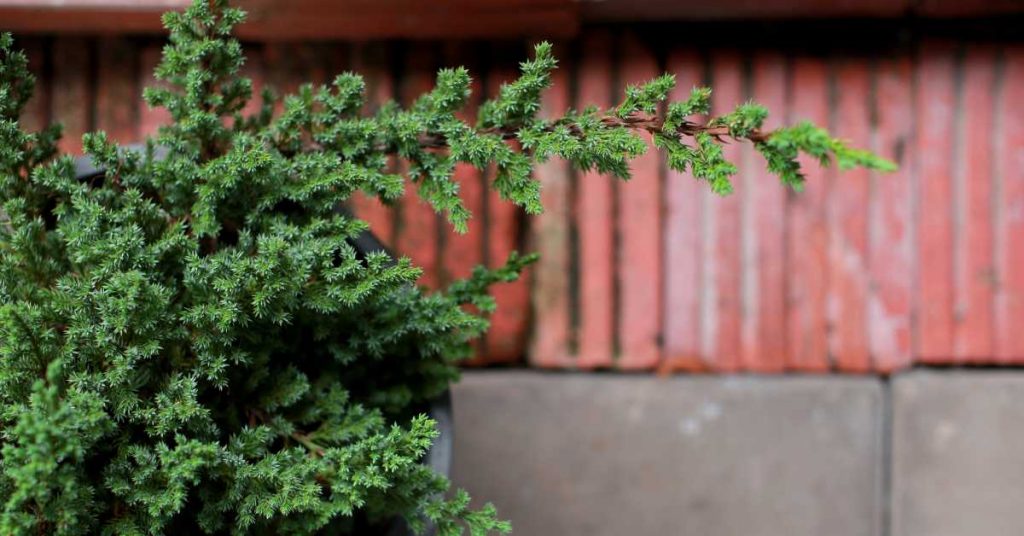
If you have a sunny, dry area that needs coverage, Creeping Juniper is an excellent option. The ‘Blue Rug’ variety creates a dense mat of silver-blue foliage.
- Height: 4-6 inches
- Zones: 3-9
- Light Requirements: Full sun
- Key Features: Evergreen, with silver-blue foliage that takes on a purple hue in winter.
Creeping Juniper is perfect for slopes, rocky areas, or as a low-maintenance ground cover along driveways. It’s hardy, drought-resistant, and helps prevent soil erosion.
9. Sweet Woodruff (Galium odoratum)

Sweet Woodruff is a fragrant ground cover that’s perfect for shady areas. It produces clusters of delicate white flowers in spring, adding a touch of elegance to the landscape.
- Height: 6-12 inches
- Zones: 3-9
- Light Requirements: Partial to full shade
- Key Features: Star-shaped leaves and tiny white flowers with a sweet scent.
This ground cover spreads quickly and stays green until the first frost, making it a great option for planting under trees or in shaded garden beds.
10. Lamium (Spotted Deadnettle)

Lamium, also known as Spotted Deadnettle, is a tough and adaptable ground cover that thrives in shaded areas and can handle poor soil conditions.
- Height: 6-12 inches
- Zones: 3-9
- Light Requirements: Partial to full shade
- Key Features: Silvery-green leaves with pink or white flowers that bloom from spring through summer.
Lamium is deer-resistant and grows quickly, making it perfect for covering bare ground in shaded spots. Its unique foliage adds interest to areas where other plants struggle.
11. Vinca Minor (Periwinkle)
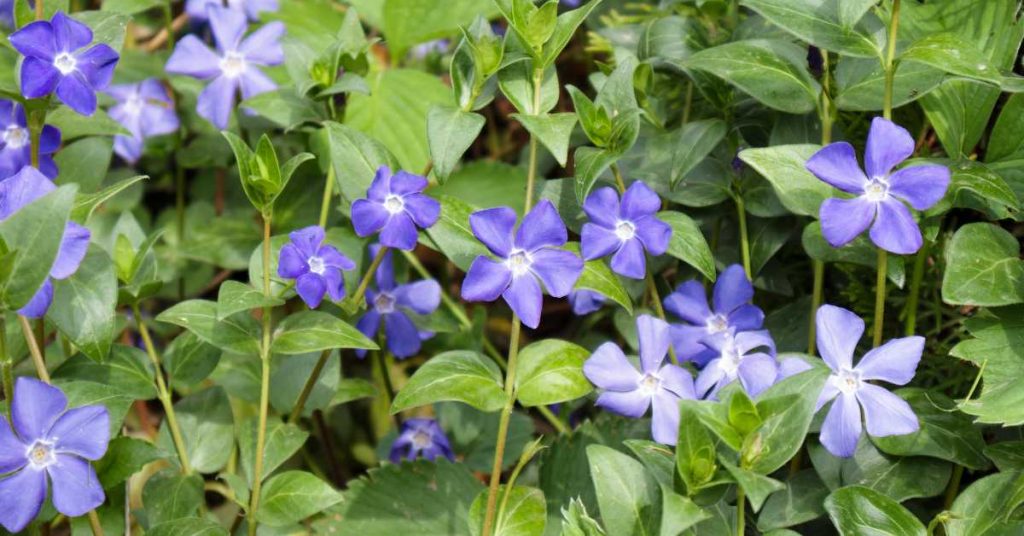
Periwinkle, also known as Vinca Minor, is a classic ground cover that is often used in shady areas where grass won’t grow.
- Height: 3-6 inches
- Zones: 4-9
- Light Requirements: Partial shade to full shade
- Key Features: Glossy evergreen leaves and violet-blue flowers in spring.
This plant spreads quickly, making it ideal for erosion control on slopes or filling in bare patches under trees. It creates a dense mat of greenery, keeping weeds at bay.
12. Ajuga (Bugleweed)
Ajuga is a versatile ground cover with striking, colorful foliage. It’s great for adding a pop of color to shaded areas.
- Height: 4-6 inches
- Zones: 3-10
- Light Requirements: Partial sun to shade
- Key Features: Dark, glossy leaves in shades of purple, bronze, and green, with spiky blue flowers in spring.
Ajuga is ideal for shaded garden beds and thrives with minimal care. It quickly forms a dense mat, making it a good choice for filling in empty spaces between taller plants.
How to Plant and Care for Ground Covers
To ensure your ground covers thrive, it’s important to follow a few basic steps:
- Prepare the Area: Remove weeds and grass before planting to give your ground covers the best start.
- Spacing: Follow the plant tag’s spacing recommendations. It might take a couple of years for the plants to fill in, but patience pays off.
- Mulch: Use organic mulch around newly planted ground covers to retain moisture and suppress weeds. Keep the mulch a few inches away from the plant stems.
- Watering: Water regularly until the plants are established. Most ground covers become quite drought-tolerant once they take root.
Ground covers are a fantastic way to fill those tricky spaces in your garden with lush greenery, while also reducing your maintenance time. With the right choice, you can turn a bare patch of soil into a thriving area of natural beauty that provides seasonal interest, attracts pollinators, and stabilizes the soil. Whether you’re looking for vibrant blooms, soothing greenery, or a way to cover a dry, sunny spot, these 12 low-maintenance ground cover plants have got you covered. Happy planting!

